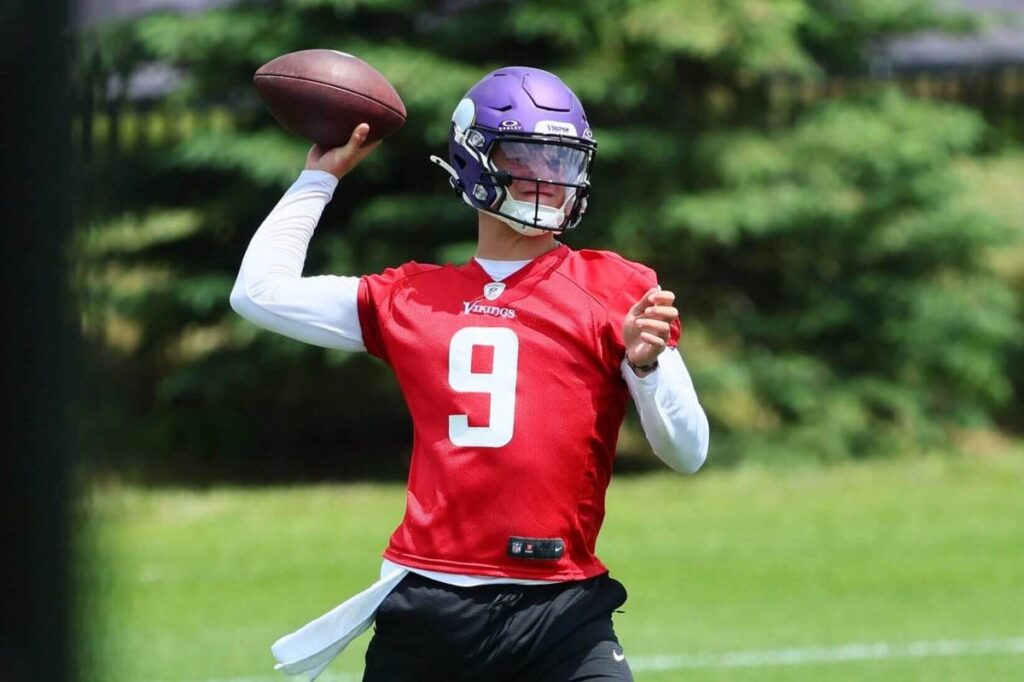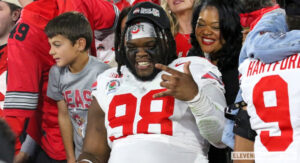
Bruce Buffer voice: It’s … tiiiiiiimmmmme! Next week marks a significant moment for the Minnesota Vikings as quarterback J.J. McCarthy returns to a competitive environment for the first time since last fall. The Vikings will kick off their organized team activities on Wednesday, continuing for several weeks before a mandatory minicamp begins on June 10. This period will be crucial for assessing the roster ahead of the 2025 season.
The anticipation is high, and to meet the expectations of their fans, the Vikings will need to focus on several key ingredients for a successful season. Among these, the performance of J.J. McCarthy stands out as a pivotal factor.
J.J. McCarthy: A Crucial Component
McCarthy’s role cannot be overstated. As a colleague succinctly put it, the top five ingredients for a winning season in Minnesota are “McCarthy’s knee, McCarthy’s arm, McCarthy’s feet, McCarthy’s eyes, and McCarthy’s mind.” This is not mere hyperbole. Elite quarterback play is essential for sustained success, and the statistics back this up. According to TruMedia, over the last three seasons, teams with higher passing EPA won 77 percent of their games.
McCarthy’s impact will be significant, but there are reasons for optimism. Last fall, he impressed the coaching staff with his processing speed and accuracy, prompting plans to increase his first-team reps. Additionally, the Vikings have maintained stellar quarterback infrastructure over the past three years, despite changes in starting quarterbacks.
McCarthy will benefit from a stronger supporting cast than his predecessors, Kirk Cousins and Sam Darnold. The Vikings have revamped their interior offensive line and added a powerful running back in Jordan Mason. Tight end T.J. Hockenson is also expected to start the season healthy, reducing the burden on McCarthy.
The Importance of Roster Health
The Vikings’ approach to player health and performance has been a game-changer under Coach Kevin O’Connell. Tyler Williams, who leads the player health and performance staff, is constantly exploring advancements in sports science. The Vikings have also recruited experts like Dan Ridenour and Chad Bari to enhance their biomechanics and player tracking capabilities.
In 2023, Minnesota ranked 15th in adjusted games lost to injuries, improving to 10th in 2024, according to Aaron Schatz of For The Numbers. However, maintaining this trend in 2025 will be challenging due to the aging roster and the injury histories of key additions like Ryan Kelly and Javon Hargrave.
Concerns linger across various positions, including left tackle Christian Darrisaw’s return from an ACL tear and the health of receiver Jalen Nailor and linebacker Blake Cashman. The Vikings’ success will heavily depend on their ability to keep key players healthy.
Rushing Effectiveness in Short Yardage
Improving short-yardage rushing effectiveness is another critical area for the Vikings. Defined as situations with 3 yards or fewer to a first down, NFL teams typically convert at least 60 percent of the time. However, the Vikings have ranked below average in these scenarios.
While Coach O’Connell prefers passing, he has done so out of necessity due to the offensive line’s struggles in short-yardage situations. The team has experimented with various strategies, including utilizing fullback C.J. Ham and signing block-first tight end Josh Oliver. This spring, enhancing the offensive line has been a priority to improve the rushing attack.
The Secondary’s Margin for Error
The Vikings’ secondary faces significant pressure, with Theo Jackson and Isaiah Rodgers expected to take on larger roles. Despite having opportunities to draft a safety or cornerback, the Vikings chose not to, indicating confidence in their current roster. However, the team may still pursue free agents to bolster depth.
A strong pass rush, led by edge rushers Jonathan Greenard and Andrew Van Ginkel, should alleviate some pressure on the secondary. The addition of Allen and Hargrave in the trenches is expected to create more havoc, giving the secondary less time to cover.
Special Teams: An Area for Improvement
Special teams often go unnoticed, but they can be the difference between winning and losing. The Vikings’ special teams have ranked near the bottom in efficiency over the past three seasons. Kicker Greg Joseph’s inconsistency and poor punt return averages have contributed to this.
In 2025, the Vikings will rely on second-year kicker Will Reichard and undrafted free agent Silas Bolden to improve their special teams performance. Punter Ryan Wright will face competition from Oscar Chapman, and the team aims to capitalize on any potential edges.
As the Vikings prepare for the upcoming season, these areas will be critical in determining their success. With a strong roster and strategic improvements, Minnesota hopes to meet the high expectations of their fans and make a significant impact in the 2025 NFL season.







